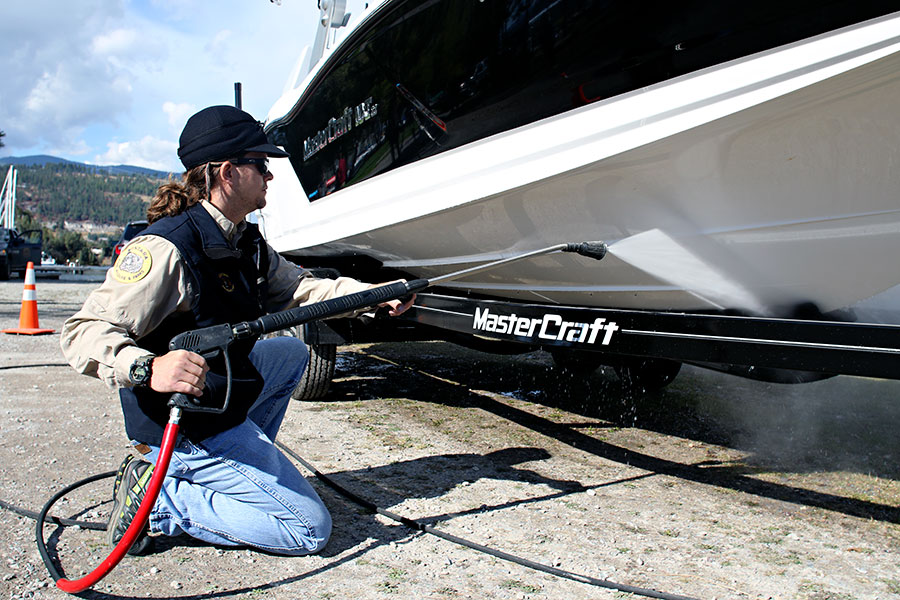No Invasive Mussels Found in State Waters as AIS Boat Inspections Increase
With no new detections, state officials begin process to lift restrictions on Canyon Ferry Reservoir
By Beacon Staff
Monitoring crews scanning state waters for aquatic invasive species report detecting no mussels this year, prompting state officials to begin the process of lifting quarantine restrictions on Canyon Ferry Reservoir.
Montana’s watercraft inspection stations set another record for boats inspected in 2019, with more than 112,00 watercraft inspected so far this year, surpassing last year’s number by 3,000 inspections. Inspectors have intercepted 16 boats with invasive mussels coming into the state.
AIS monitoring crews have surveyed 300 unique waterbodies for aquatic invasive plants and animals. No mussel veligers or adult mussels were detected in the waters of Montana this year.
That news has prompted Montana Fish, Wildlife and Parks to initiate the process to lift the quarantine restrictions on Canyon Ferry Reservoir. If the restrictions are lifted, the Canyon Ferry certified boater program would end, and Canyon Ferry inspectors would shift to a mobile roving inspection crew.
The certified boater program on Tiber Reservoir will remain in place for the next two years. In 2016, invasive mussel larvae were detected in multiple water samples from Tiber Reservoir, which requires a five-year quarantine period. Canyon Ferry reservoir had one suspect sample that dictated a three-year quarantine period of mussel-free water samples.
An amendment to an administrative rule is required to change to the quarantine restrictions on Canyon Ferry Reservoir. A decision is expected by spring 2020.
FWP and partner organizations operate watercraft inspections across the state to prevent the transport of aquatic invasive species. Stations increasingly are operated through contracts with local entities to provide increased local oversight and local community involvement.
Both locally and statewide, efforts to reduce the risk of aquatic invasive species spreading through Montana’s waterbodies have been stepped up in response to the positive detection in 2016 of invasive mussel larvae east of the Continental Divide in Tiber Reservoir, as well as their suspected presence in Canyon Ferry Reservoir and the Missouri River near Townsend.
So far, the traces of contamination are restricted to the Missouri River Basin, but the likelihood persists of mussels hitchhiking on the hulls of boats or in bilge water or cloistered away in irrigation equipment. The threat of mussel infestation hits especially close to home for those working to protect the waters of Flathead Lake and its surrounding network of rivers and creeks, and it comes to rest at the doorstep of the Columbia River Basin — the only major watershed in the West still believed to be free of quagga and zebra mussels.
Mussels have detrimental impacts on recreation and infrastructure when they attach to underwater surfaces, where they breed rapidly — an adult female zebra mussel can release a million eggs each year. Flathead Lake is one of the largest and cleanest freshwater lakes in the country, and boaters can help keep it that way by taking care to ensure their watercrafts are clean, drained and dry.